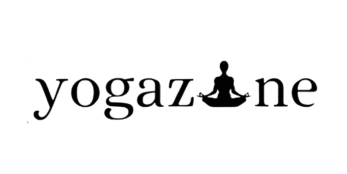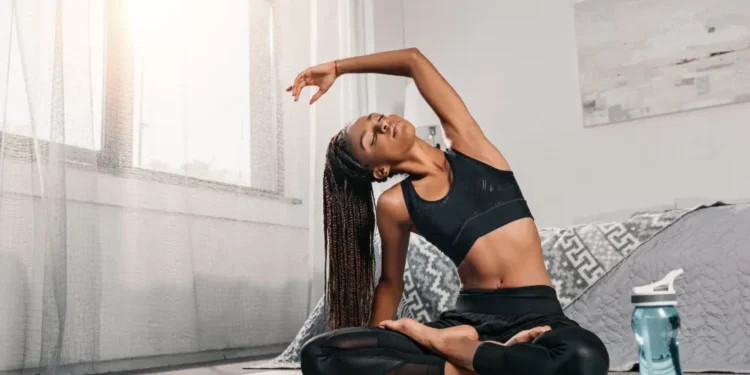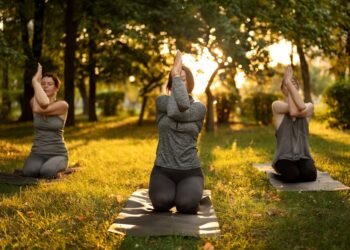Now that you know what yoga poses are, it’s time kick start your yoga journey to learn which poses are best for beginners. The truth is that there are much beginner-friendly yoga poses out there, and most teachers will tell you not to worry if you can’t yet execute every pose with ease. After all, perfecting your form will take time and practice. As long as you have a basic understanding of the different yoga postures, you’re already on your way to becoming an adept practitioner.
A lot of people believe starting with a more challenging vinyasa-style sequence will be the best way for them to ease into the practice. A vinyasa-style sequence has its place in the world of yoga, but it’s not necessary in order to get started – or stay committed! When you start with easier poses first your body doesn’t have to go through as much effort in order for it to hold the pose for that long. This makes balancing on one leg much easier and strengthens your muscles in other challenging poses like the tree Pose.
What is a yoga pose?
Yoga is a system of movements that promotes physical, mental, and emotional health, flexibility, and well-being. Yoga is practiced to assist in relieving stress, improving flexibility, increasing stamina and strength, and preventing injury. There are numerous types of yoga, including Ashtanga, Bhakti, Hatha, Iyengar, Integral, Vinyasa, and many more. beginners pose When you’re just starting out, there are a few poses you should choose to practice because they’re easier than some other more advanced poses. These poses aren’t meant to be punishment or to waste your time.
When you’re just starting out, you don’t need to practice poses that are too challenging or even that far advanced. Choose poses that are more beginner friendly and can be done by almost anyone. These poses are gentle, require very little effort, and are great for beginners. The most beginner-friendly poses are sun salutations, standing poses, forward bends, and inversions.
Basic beginners Poses
Child’s Pose – Child’s Pose is one of the most beginner-friendly yoga poses, and it’s always in the first pose of every sun salutation. Child’s Pose is a pose that opens your chest and shoulders while lengthening your spine and relieving stress in your neck and lower back. The key to getting the most out of this pose is to relax and let go of any tension you have in your shoulders and spine. Placing your hands on your thighs or behind your back can help you focus more on relaxing than trying to keep your arms at your sides.
Sun Salutation Pose – Sun Salutations are a series of 26 poses that flow into one another and build your core, arms, and legs. Every sun salutation begins with a child’s pose and ends with an inverted pose (where you’re upside down). Child’s Pose opens your chest and shoulders while lengthening your spine and relieving stress in your neck and lower back. After a sun salutation pose, like downward dog, you’ll do a spine-opening pose, like a table pose.
Tadasana – Tadasana is a basic standing pose that is performed at the beginning of every asana class. This pose helps warm up your body, joints, and muscles. When you’re in Tadasana, try to imagine you’re standing tall and looking forward while breathing deeply. Tadasana is a great pose to do when you’re waiting on your mat or when you need a quick reset.
Comforting poses
Reclining Hero Pose – Reclining Hero Pose is a great pose to do after a sun salutation sequence or when you need to relax your body and ease stress in your joints and muscles. In this pose, you’ll lie flat on your back with your arms out to your sides while your legs will be bent with your feet in line with your knees. Keep your hips low and your spine neutral as your arms and legs relax into the pose.
Hero Pose – Hero Pose is a pose that’s perfect for beginners. It’s a simple pose that most people do well. When you do Hero Pose, keep your hips low and your spine neutral. Your arms should be by your sides with your palms up and fingers pointing forward. Breathe evenly and deeply as you focus on relaxing your body from head to toe.
Inversions
Sun Salutation inversions – It’s important to start your yoga practice with sun salutations because they’re a gentle way for your body to get warmed up. During the sun salutations, you’ll perform a series of 26 inverted poses. These poses are the best way to warm up your joints and muscles while they’re relaxed. It’s important to do inverted poses after you perform sun salutations because they can put too much pressure on your body if you do them before.
Supported Headstand – Supported Headstand is a pose that’s performed after a sun salutation sequence. It’s an inverted pose that requires you to have your head and shoulders above the ground while your legs are bent with your feet in line with your knees. You’ll need to have a wall or sturdy bench that’s about 5-10 feet away. This pose is great for improving balance and flexibility in your neck and shoulders.
Check your flexibility
When beginning any exercise program, a good idea is to check your flexibility. Yoga is no different. If you are fairly flexible, it will be much easier to get into the poses. If you are stiff or inflexible in certain areas, you can injure yourself. Even if you are flexible, you may not be able to get into certain yoga poses right away.
This is fine, as long as you are able to get into the pose eventually. If you are stiff in one area, simply modify the pose so you can still reap the benefits. If you are less flexible, don’t worry. Yoga will help you become more flexible with time. Yoga poses can help you stretch out your muscles and increase flexibility along the way.
Don’t forget your breath
A lot of yoga poses are static, with very little movement. This is because breathing is everything in yoga. It is important to not forget to breathe during a pose. Often, the pose is the opposite of how you would normally breathe. So imagine that you are breathing normally while in the pose, and you must breathe with your hands in the pose, or feet in the pose.
The yoga poses are there to help you learn how to breathe more deeply. It is important to focus on your breathing while in the pose. And while you can breathe naturally while getting into the pose, once you are in the pose, use the pose to focus on your breathing.
Plan your routine
When beginning a yoga routine, block it out in your schedule. You don’t need to try and do it all at once, but you also shouldn’t try to cram it in over a weekend. Instead, make it a weekly or monthly event. You can even schedule a designated time for it. When you block it out, you will feel a lot less stress about it. You can also try to make it a social event, inviting a friend or family member to join you. This can be a great way to ease into the practice with someone else.
Take time to stretch
Yoga is all about stretching. But it is also important to stretch with purpose. Don’t just stretch aimlessly, as this can lead to injury. Stretch your legs, arms, back, and abdominal muscles. If you are more flexible, you can stretch your chest, neck, and shoulders. Stretch all of the major muscles in your body to reap the maximum benefits.
Hold the pose
Most yoga poses should be held for a few seconds before you release them. This helps your muscles to relax and allows the blood to flow back into the muscles. As you can see in the yoga poses, some of the poses should be held longer than others.
This is because some poses might require you to concentrate on breathing, while other poses are active, where you can simply relax. It is important to take the time to breathe properly in each pose and focus on breathing if you are doing poses like the warrior pose, where you must concentrate on breathing.
Stretch again and reap the benefits
Once you have completed a yoga pose, stretch again, but this time stretch the opposite limb. This is called counter stretch. Counter stretch is when you stretch the limb that you are not using, like stretching your non-dominant leg.
This is what you are trying to stretch the other limb. This is important to stretch the other limb while relaxing and breathing deeply. It is also important to stretch both sides of the body to reap the maximum benefits. If you are not flexible enough to stretch both sides of your body, use a strap to stretch one side and a block to stretch the other.
Felling the Sanskrit name of Yoga: YOGA
Yoga is a Sanskrit word that means union. The poses are intended to bring you closer to your true self, as well as others in the room. If you are feeling social, invite a friend to join you in your Yoga journey. There are many different types of Yoga poses.
You can practice Yin Yoga, where you hold poses for longer periods of time, and then you can practice Yang Yoga, where you hold poses for shorter periods of time. You can also choose a pose that is beneficial for you, like the plank pose for core strengthening or an arm balancing pose. It is important to find a pose that is beneficial for your specific needs.
Conclusion
Yoga is a practice that improves physical, mental and emotional well-being. There are many types of yoga, and they all share the same basic philosophy. The poses in yoga vary depending on the instructor and style of yoga you choose to practice. Start with poses that are more beginner-friendly and take it slow. When you’re ready, experiment with more advanced poses. Whether you’re just getting started or you’ve been practicing for years, yoga is worth a try. It’s a great way for anyone to relax and de-stress while also strengthening their body and mind.







